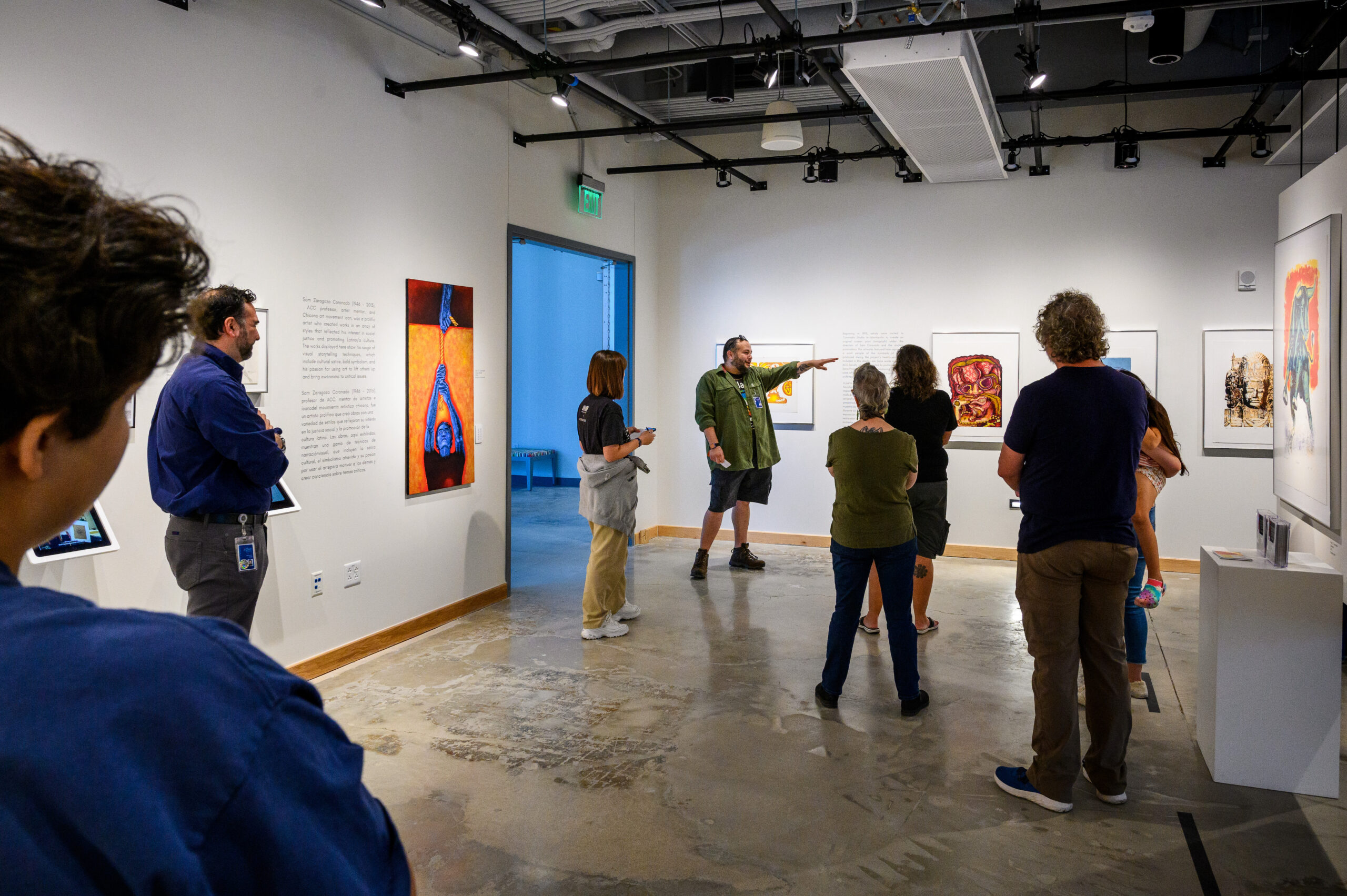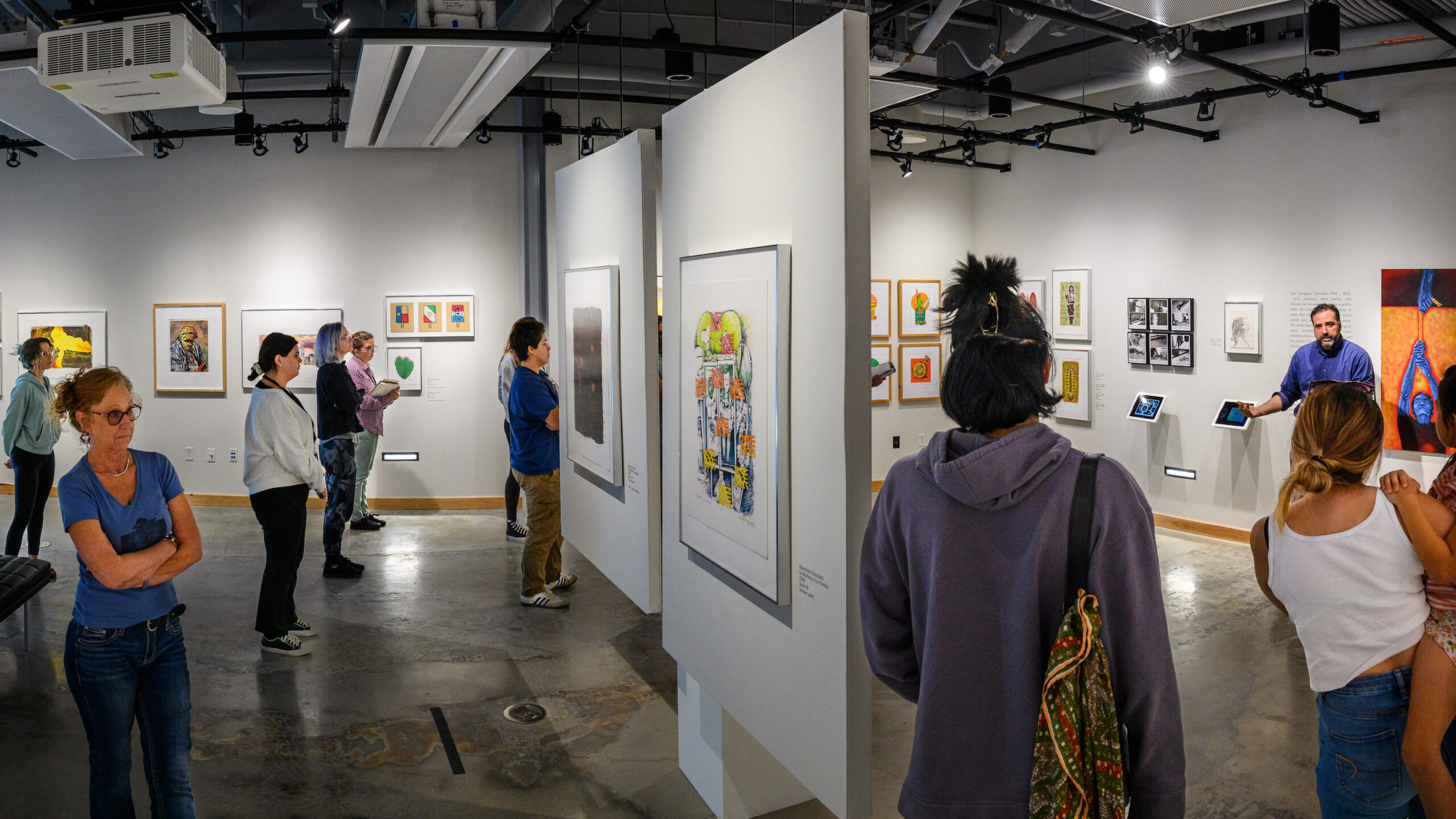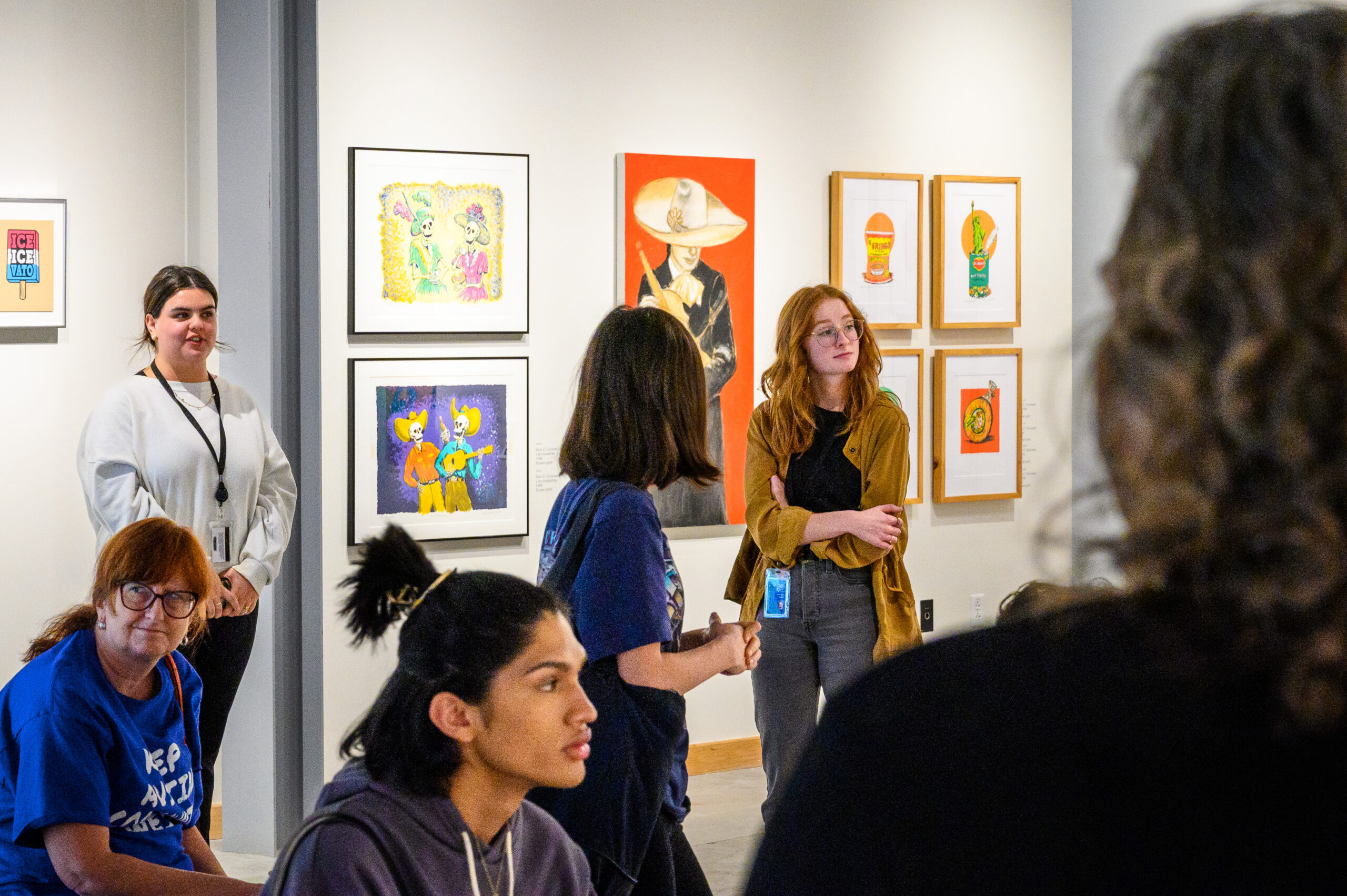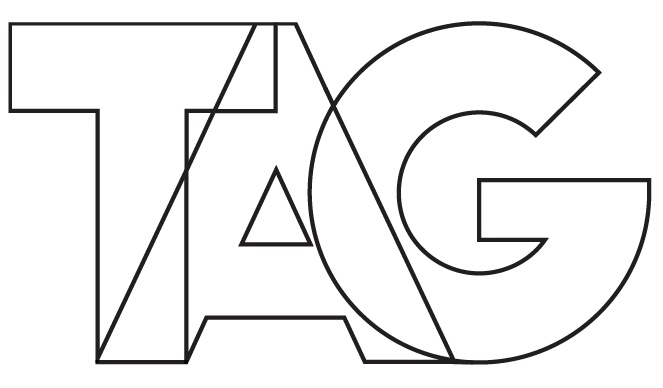
Professor Bernardo Diaz pointing TAG Tuesday audience towards The Serie Project section of the exhibition.
During the September 27 TAG Tuesday event, exhibition curators Bernardo Diaz and Peter Bonfitto explained their curatorial process in the gallery space to enhance these narratives. The gallery is split into three sections: artworks by Sam Coronado, a collection of Serie project prints, and prints by three Serie Project master printmakers. The space uses visual cues such as exhibition texts and floating walls to indicate different sections. When entering the main door, you are met with Quince II (2011), an iconic and gigantic print of a rearing bull by Coronado. Diaz and Bonfitto consider this print the exhibition’s “anchor piece” because it makes a visually powerful statement in the entryway and is one of Coronado’s most recognizable works.
The exhibition demonstrates a key principle that Coronado’s life revolved around: community. As professor Diaz pointed out during the talk, the idea of community was mirrored in the collaborative effort involved in creating the exhibition itself. The exhibition came together because of the determination of Sam Coronado’s widow, Jill Ramírez-Coronado, to lend out parts of her collection. Over a year and a half, the exhibition became a collaborative effort between Ramírez-Coronado, printmaker Pepe Coronado (no relation), the Coronado Print Studio, ACC faculty, alumni, students, and TAG staff.

Gallery Director Peter Bonfitto giving an overview of the exhibition and the curatorial process.
The first section of the gallery focuses exclusively on Sam Coronado, the label texts stress his importance as an “ACC professor, artist, mentor, and Chicano art movement icon.” Coronado was the co-founder of Austin’s Mexic-Arte Museum (https://mexic-artemuseum.org/about/out/), and he founded both the Coronado Studio and an artist-in-residence program called the Serie Project. According to the curators, their goal was to display works that showed his full range of talents, from painting, to screen printing, to quick sketches. Prints such as Guerrillera (2001), which depicts a young Central American woman as a guerilla fighter, demonstrate his passion for bringing awareness to critical issues. Coronado is mostly known as a screen printer, but he began as a painter, earning his Bachelor of Arts at The University of Texas at Austin. His last painting, Mariachi Girl (2013), hangs unfinished in the gallery.
In the second section of the exhibit, prints from the Serie Project are displayed on the wall. The Serie Project creates and promotes screenprints from Latino/a artists with the help of Coronado Studio. The project was inspired by Self-Help Graphics (1970-current), a screen-printing collective that was active at the height of the Chicano movement (1960-1985) in Los Angeles. The curators explained that they had access to hundreds of Serie prints for the exhibition. When selecting the Serie artwork to be shown, Díaz and Bonfitto began with the formal qualities found in each work such as form, line, color choice, and balance. Immediately selecting compositionally strong works helped to narrow down the large number of options they had. The intention was also to capture specific themes and qualities within these pieces. Some prints very outwardly refer to Chicano/a culture, while others give subtle nods. The exhibition also includes a number of prints by ACC faculty members who were involved in the Serie Project, and additional works by master printers who worked with Sam Coronado.

TAG Tuesday audience members asking Gallery Director Peter Bonfitto and Professor Bernardo Diaz questions about the exhibition curatorial process
During the talk, Professor Diaz had an interesting comment on the way that people may represent themselves or their culture through art, a theme that runs through the exhibition:
“We often think of identity as the things that make us who we are as individuals . . . but when we look at the origin of the word, ‘Idem’ in Latin, it really means a replication or the quality of being the same. So, what really happens is, identities are us drawing from different things. I am an artist, a Latino, I am male . . . and all these little fragments make up the whole of who we are . . . On a very formal level, screen printing is doing something similar because each of the [color] separations are working together to create a single image.”


Recent Comments